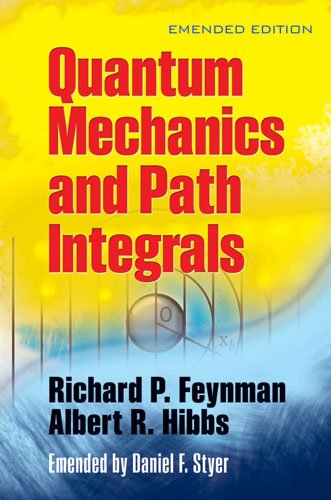

Most ebook files are in PDF format, so you can easily read them using various software such as Foxit Reader or directly on the Google Chrome browser.
Some ebook files are released by publishers in other formats such as .awz, .mobi, .epub, .fb2, etc. You may need to install specific software to read these formats on mobile/PC, such as Calibre.
Please read the tutorial at this link. https://ebooknice.com/page/post?id=faq
We offer FREE conversion to the popular formats you request; however, this may take some time. Therefore, right after payment, please email us, and we will try to provide the service as quickly as possible.
For some exceptional file formats or broken links (if any), please refrain from opening any disputes. Instead, email us first, and we will try to assist within a maximum of 6 hours.
EbookNice Team

Status:
Available0.0
0 reviews
ISBN 10: 0486477223
ISBN 13: 9780486477220
Author: Richard P Feynman, Albert R Hibbs, Daniel F Styer
From astrophysics to condensed matter theory, nearly all of modern physics employs the path integral technique. In this presentation, the developer of path integrals and one of the best-known scientists of all time, Nobel Prize–winning physicist Richard P. Feynman, presents unique insights into this method and its applications. Avoiding dense, complicated descriptions, Feynman articulates his celebrated theory in a clear, concise manner, maintaining a perfect balance between mathematics and physics.
This emended edition of the original 1965 publication corrects hundreds of typographical errors and recasts many equations for clearer comprehension. It retains the original's verve and spirit, and it is approved and endorsed by the Feynman family. The opening chapters explore the fundamental concepts of quantum mechanics and introduce path integrals. Subsequent chapters cover more advanced topics, including the perturbation method, quantum electrodynamics, and the relation of path integrals to statistical mechanics. In addition to its merit as a text for graduate courses in physics, this volume serves as an excellent resource for professionals.
Part I: The Quantum Mechanical Treatment of a Single Particle
Chapter 1: The Principle of Least Action
Chapter 2: Quantum Mechanics and the Principle of Least Action
Chapter 3: The Sum Over All Paths
Chapter 4: The Schrödinger Equation
Chapter 5: The Classical Approximation
Chapter 6: The Harmonic Oscillator
Chapter 7: The Hydrogen Atom
Part II: Many-Particle Systems and Other Applications
Chapter 8: Systems with Many Degrees of Freedom
Chapter 9: Quantum Electrodynamics
Chapter 10: Statistical Mechanics
Chapter 11: The Variational Principle
Chapter 12: Theory of Liquids
Chapter 13: Superfluidity
Chapter 14: Polaron
Part III: Advanced Topics
Chapter 15: Relativistic Formulation
Chapter 16: Propagators in Space-Time
Chapter 17: Green's Functions
Tags: Richard P Feynman, Albert R Hibbs, Daniel F Styer, Quantum, Mechanics